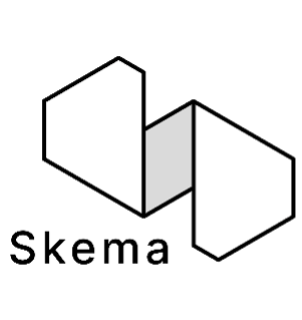
Leading the Charge
Charlie Cichetti
CEO + Co-founder of Skema
May 15, 2024
AI software pioneer Skema blazes a trail to industry transformation.
Architects face intense pressure as they grapple with the challenge of integrating automation and AI into the design process. Combined with ever increasing design complexity, stringent regulatory requirements, and sustainability demands, these macro trends are driving a transformative shift in the industry. When it comes to adopting new technologies, business value is tantamount. Architecture firm leaders seek solutions for incorporating new methodologies into their work that yield tangible business advantages.
The tremendous amount of BIM data that architecture firms have amassed over many years can serve as the spark for transformation.
Every project yields BIM files that represent the firm’s principals’ and senior designers’ best work. This ‘best work’ is not just a culmination of creativity and skill, but also encapsulates the distilled knowledge of proven solutions. These projects, and the BIM data within, represent a rich repository of intellectual property. However, until now they have remained largely inaccessible due to technical obstacles. Firms can unlock this wasting asset by applying advanced technologies including machine learning to this facet of the inherently valuable design process.

Our own software solution, Skema, aims to improve efficiency and productivity by using a firm’s own designs and standards to reduce rote work and accelerate deliverables. Skema is the only design software that automatically generates highly detailed and fully integrated BIM models from conceptual design. Skema’s goal is not to design a 100% finished building. Skema automates the repetitive parts of a programmatic design – roughly 50% - leaving the remaining 50% for the designer to focus on the signature spaces and experiential elements of the building.
Skema automates the repetitive parts of a programmatic design – roughly 50% - leaving the remaining 50% for the designer to focus on the signature spaces and experiential elements of the building.
Translating AI into Business Benefits
If we can implement AI the way other industries have benefitted from computational design, then moving forward from schematic design does not need to be a labor-intensive process. Skema represents a step change in design automation, delivering business benefits that other solutions cannot achieve. Among them are:
Win work with less effort
Architects can create high-quality design options to share with a client in a fraction of the time that is typically allocated for a project
pursuit. Project pursuits become less risky.
Solve for detail design during schematic design
Roughly 30-40% of a design’s fee budget is allocated to transferring schematic design to detail design, often through the work of a team of
project architects and BIM experts. The firm can reallocate that substantial portion of the fee budget in any way they so choose. Perhaps
they’ll deliver designs faster, or at a higher level of quality assurance, or go after more work.
Earlier validation and design intent
When the initial design includes program data from the outset, designers can more easily produce validated options based on design intent,
and aligned with the goals and objectives defined by stakeholders and the design team.
When designers are in control of the technology, and not the other way around, the technology can produce significant benefits.
AI: “Automagical” results, driven by the designer
We believe the industry is ready to shift its attention away from the fascination of AI-generated visualizations to the thornier technical problems related to documentation and intellectual property. When designers are in control of the technology, and not the other way around, the technology can produce significant benefits.
Knowledge Reuse: Get more value from intellectual property
By tapping into the firm’s intellectual property in new ways, architects can unlock valuable insights and streamline workflows like never
before. A firm’s design elements represent proven, successful solutions. Through Skema’s machine learning tools, designers can reuse those
solutions, in the form of flexible, morphable “puzzle pieces” that they can use for rapid prototyping of different layouts and
configurations to reach a desired aesthetic and functional design proposal.
Create BIM in Minutes
AI tools should almost instantly generate high-quality BIM models, significantly accelerating the creation of fee-generating BIM
deliverables. By accomplishing what once took weeks in moments is nothing short of a paradigm shift in detail design, one that empowers
architects to focus more on creativity and less on tedious tasks.
Adapting to new realities
Only through smart implementation of advanced technologies can design firms effectively and profitably produce designs that meet today’s requirements. Sustainability, for example, calls for an ever increasing level of analysis and sophistication, while the demand for repurposing vacant office buildings or other existing structures into housing, lab space, or other building types requires exceptionally skilled architects. As these shifts redefine the architectural landscape, firms must ensure their businesses are agile and profitable. Embracing advanced technologies not only enhances design capabilities but also strengthens the foundation of architecture firms, ensuring their resilience in the face of evolving demands and opportunities.
Modular Advantages
It’s well known that modular design places an outsized burden on architects, as McKinsey’s 2019 modular construction report assessed. Below are just two ways architects are re-examining their roles to effectively integrate computed modular principles into their designs, and how advanced technologies can help.
Knowledge curation and analysis
As architects establish a digital repository of knowledge from previous projects, modular becomes more attractive and financially feasible.
This repository should encompass models and data from previous successful modular designs, including structural systems, materials, and
construction methodologies. By analyzing the performance of modular components in various contexts, architects can make informed decisions
for new projects.
Design frameworks and standardization
Architects must evolve from designing standalone structures to developing adaptable design frameworks. These frameworks consist of
standardized modular elements that can be combined in different ways for each new project or proposal. Architects create these frameworks by
extracting designs from successful past projects and incorporating them into a modular toolkit.
Designers of all stripes recognize that they need to add AI chops to their skillsets. Firms that encourage their staff to develop AI skills and enable on-the-job learning will be better positioned to stay competitive in an increasingly AI-driven landscape.
Join us.
Charlie Cichetti
Chief Executive Officer + Co-Founder
LEED Fellow, WELL AP
Charlie is proud to be one of the leaders in the green building industry. He has built a career around green building services, and leads four companies that hold sustainability leadership as a core value — Sustainable Investment Group (SIG), Green Building Education Services (GBES), Blue Ocean AEC, and Skema. These companies allow Charlie the opportunity to put his high-level LEED expertise and accreditation to work. He has led many green building projects (over 50 Million SF of LEED/ENERGY STAR/Cx-RCx) to LEED Gold, and even a few to the highest mark: Platinum. He has facilitated online and in-person training sessions that have helped tens of thousands of professionals obtain LEED accreditation.




